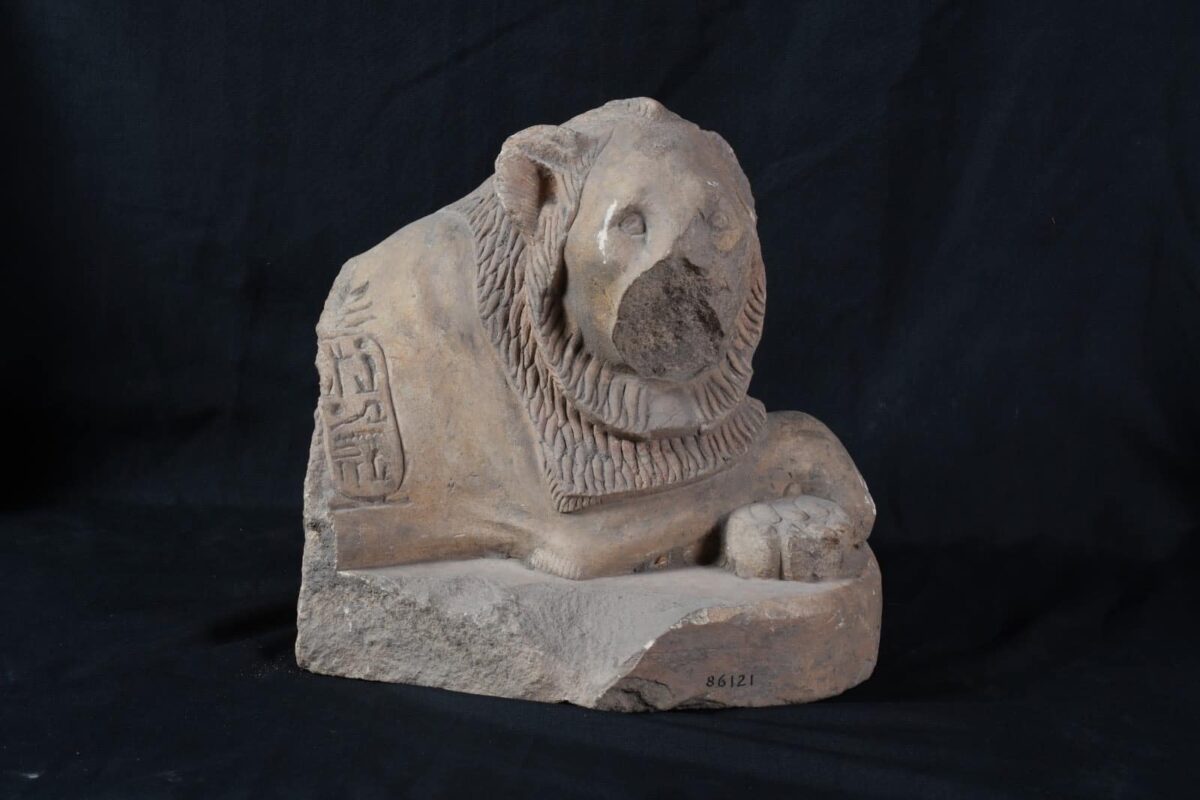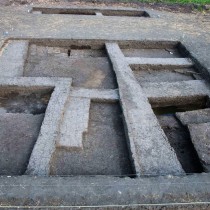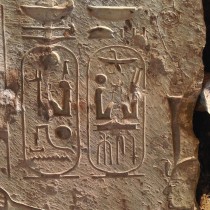“Antiquities of Qantir: A Century of Excavations and Research at the Ramesside Residence” is the title of a temporary exhibition on the history of research in modern Qantir (Eastern Delta, Egypt). Here, a mission from the Roemer-Pelizaeus Museum (Hildesheim, Germany) excavates the ancient city of Piramesse, the capital of Pharaoh Ramesses II and his successors. The exhibition, featuring both antiquities of Qantir and nearby Tanis, takes place at the Egyptian Museum in Tahrir. It was inaugurated by Dr. Mostafa Waziri, Secretary General of the Supreme Council of Antiquities, and the German Ambassador to Cairo, Frank Hartmann. The exhibition is a cooperation between the Egyptian Museum in Tahrir and the Roemer-Pelizaeus Museum.
During his speech, Dr. Mostafa Waziri stresses the role of this exhibition as an occasion for joint cooperation between the museum and the state of Germany. He also referred to the 250 archaeological missions from 25 foreign countries that currently work in Egypt. He mentioned that the exhibition includes artifacts both from Qantir, as well from San el-Hagar (Sharqia Governorate). San el-Hagar is the site of the ancient city of Tanis, which replaced Piramesse as Egypt’s capital in the 21st Dynasty, and it is important as many edifices from the old capital were literally moved to the new one.
Ambassador Frank Hartmann reviewed the history of excavations in the site of Qantir since 1980. This is when the Roemer-Pelizaeus Museum started its mission there in cooperation with the Supreme Council of Antiquities.
Dr. Dietrich Raue, Director of the German Institute of Archeology in Cairo, stressed the contribution of the Egyptians working in Qantir. He added that cooperation between Egypt and Germany was not limited to excavation, but also included the exchange of technical expertise and cultural ideas.
Professor Moamen Othman, head of the Museums Sector at the Supreme Council of Antiquities, explained that the exhibition includes 250 finds from Qantir. He also reviewed the excavation history at Qantir: he started with Mahmoud Hamza Ali, the archaeologist who first identified the site as Piramesse in 1928, and continued with Labib Habachi who worked there during the ’40s and confirmed Ali’s theory. Finally, he mentioned the work of the Roemer-Pelizaeus Museum which took over research in the site in cooperation with the Supreme Council of Antiquities.
Dr. Ali Abdel Halim, Director General of the Egyptian Museum, said that the exhibition includes statues and inscriptions of the first Ramesside kings, such as Seti I and Ramses II, as well as architectural elements and artifacts that illustrate aspects of daily life within that important city.
The exhibition will be held from July 16 to October 16, 2023 AD, in Hall No. 44 on the ground floor of the Egyptian Museum in Cairo, during the official working hours of the museum.
More on current work in Qantir and the history of work in the capital of Ramesses II is given in Piramesse Exhibition, the official website of the Roemer-Pelizaeus Museum on the Qantir/Pi-Ramesse project. The tomb of Ramesses II himself in Luxor is available for an online visit here.





